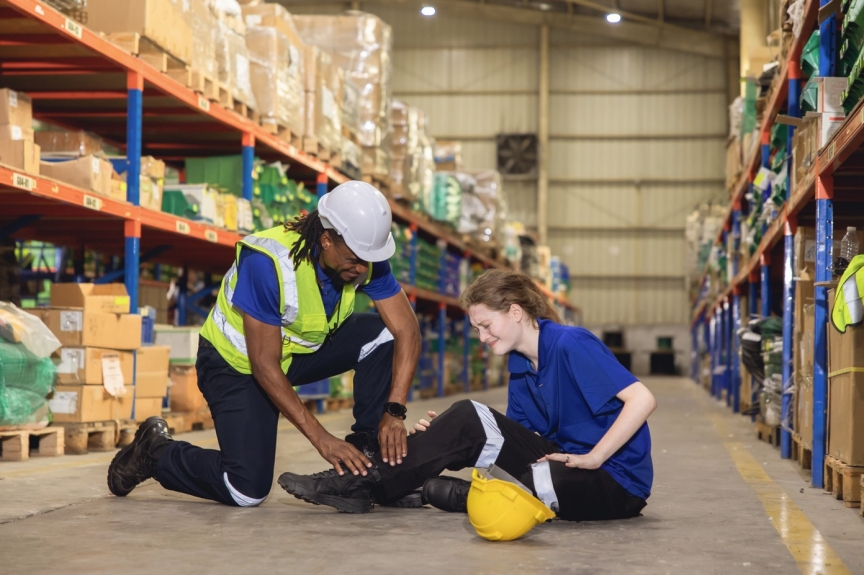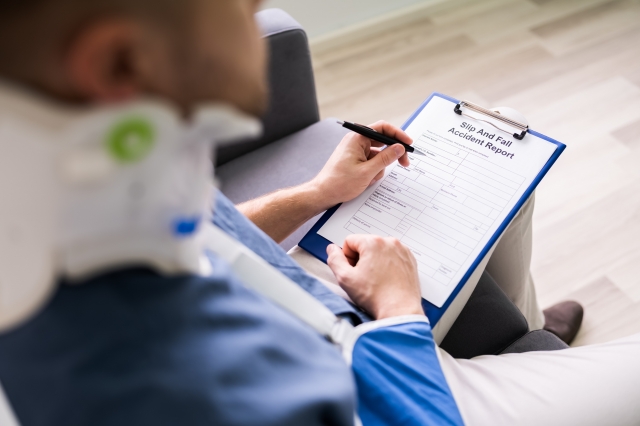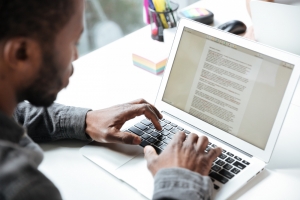A slip and fall can leave more than just a bruise. One wrong step and suddenly you're dealing with pain, paperwork, and medical bills you didn't plan for. Most people aren't sure what to do next, let alone who's actually responsible. The truth is that liability in these cases isn't always obvious. That's why it's important to understand the key things that determine who's at fault.
1. Who Had Control of the Property
The first thing to look at is who was in charge of the commercial property. That could be the business owner, a landlord, or even a tenant. It goes down to who had the power to fix, clean, or warn about hazardous conditions.
Take a supermarket, for example. If you slipped on a spilled drink in an aisle, the store is likely the responsible party. But if the fall happened in a shared parking lot, it could be the property manager or another business entirely. If the person in charge didn't fix a hazard or didn't warn anyone about it, they could be one of the liable parties.
This is where speaking to a slip and fall lawyer makes sense. They can help figure out who was supposed to take care of the area and whether they dropped the ball on their duty of care. You don't want to make guesses when the stakes are high.
2. If There Was Any Warning Given
Some dangers can't be fixed right away. In those cases, a warning needs to be given. That can be a sign, tape, or someone standing by the hazard. But if there was no warning at all, and the injured person got hurt because of it, that's on them.
Think about how often you see ‘Wet Floor' signs. They're not there for show. They're there to help maintain a safe condition and to warn you before something bad happens. If you slipped because a business didn't bother putting one out, it shows a lack of care.
On the other hand, if a warning was clear and right in front of you, the case becomes harder to argue. You're expected to take notice. Still, not every warning is enough. If it was too small or easy to miss, that could work in favor of the injured party.
3. Whether the Property Was Maintained Properly
No one expects every floor to be spotless all the time. But if there were unsafe conditions and no one did anything about them, that's a problem. The law expects property owners to take reasonable steps. If they don't, they can be held accountable.
Maybe a stairway light was out for weeks. Maybe a leak kept leaving water on the tiles near a shop entrance. If something was clearly broken or inadequate lighting made the area risky, and nothing was done, that's negligence. A fall that could've been prevented becomes a legal issue.
To be fair, not every slip and fall injury means someone was one of the negligent property owners. But when a place is ignored or slippery floors, uneven surfaces, or other hazards are left sitting for too long, that's usually a sign that someone didn't meet their legal duty.
4. Your Own Actions at the Time

Your behavior also plays a role in what happens next. If you were distracted or ignoring signs, some of the blame might fall on you. It's called shared fault, and it's common in slip and fall cases.
Let's say you were on your phone and didn't notice a spill even if it was obvious. Or maybe you were wearing shoes that made it harder to walk safely. These things can affect how much you're able to claim.
But that doesn't mean you have no case. Even if you made a mistake, the other side still has to show they took reasonable steps. If not, you could still receive fair compensation. It comes down to the full picture and not just one detail.
5. What Evidence You Have
The strongest cases are backed by proof. The more you can document, the better. That includes photos of the accident scene, names of witnesses, surveillance footage, and an incident report filed right after it happened. Waiting too long to speak up can weaken your case.
Photos of the scene help show what caused the fall. Names and numbers of people who saw it happen can also back you up. And if you went to a doctor right after, that helps show the injury was real and serious. Keeping medical records and proof of medical care are key.
If you walked away thinking it wasn't a big deal, and only followed up days later, it can work against you. That's why it's important to act quickly. The right evidence can make the difference between a successful claim and a dead end.
Wrapping It Up
Slip and fall accidents are more complex than they look. Figuring out who's responsible means looking at who was in charge, how the hazard was handled, and what steps were taken to prevent the risk of injury. It's not always black and white, but these five factors can help point you in the right direction.
If you've been hurt, don't brush it off. Whether you suffered minor injuries or severe injuries, the cost of doing nothing can be higher than you think. The sooner you understand who's liable, the sooner you can seek legal representation, get a legal consultation, and take action that protects your health, your rights, and your future.






